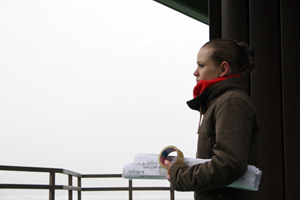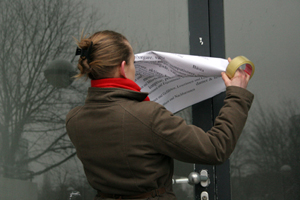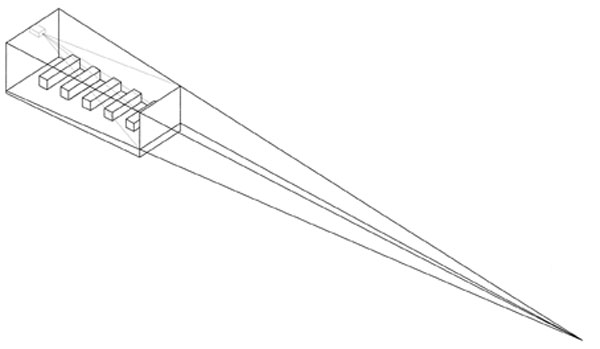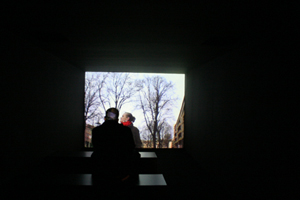| Katya Sander | e@katyasander.net |
| Exterior City 2005 single-channel video installation, 23 min. Video:  
Exterior City is a third city, imagined between Malmö and Vienna, two cities having different histories of socialism, and thus very specific social housing policies. This is where ‘Exterior City’ is located – between these two sets of policies, between their manifestations in housing complexes, between the histories of these two cities, now, in the present. A woman walks around in these cities, putting posters on doors and then passing through them. These doors connect the exterior of Malmö to that of Vienna. The posters she puts on the doors are made up of lists of names. These names do not address individuals, but rather, groups (“Dear workers, bosses, tenants, landlords…”), perhaps individuals as members of groups. Exterior City is a city of flows, it is the set of flows that these two cities set out to channel, to direct, to control through city planning. This figure bearing posters is a carrier of action, in this third city, in the flows, in the exterior, but it is not certain as to whether she is guided by these cities, and thus directed by the planning or if she, as a carrier of action, is offering some kind of resistance to this aspect of being-directed. As she emphatically puts it, at one point in the video, “Mapping is acting!” Installation:
An image is projected onto the screen, a video which follows an actor mapping a trajectory between two spaces and thus creating a third space visible only over time. This place is the vanishing point, but it is not a point in space. It is a temporal sequence, an action unfolding: the activity of mapping; mapping a city as a space of action. There is nothing behind this action. Mapping is the ground, it is the place from which space is projected, but it is an activity. It is not the map, but mapping. This is the vanishing point: the point at which visibility stops, the point from which a space is projected. Exterior City is not a map, but rather, a space of action, a city without a map, which requires that map’s production. It is the space of this production, where flows of capital, labor and desire exist before projected onto a grid, before rationalism, before the map. |


